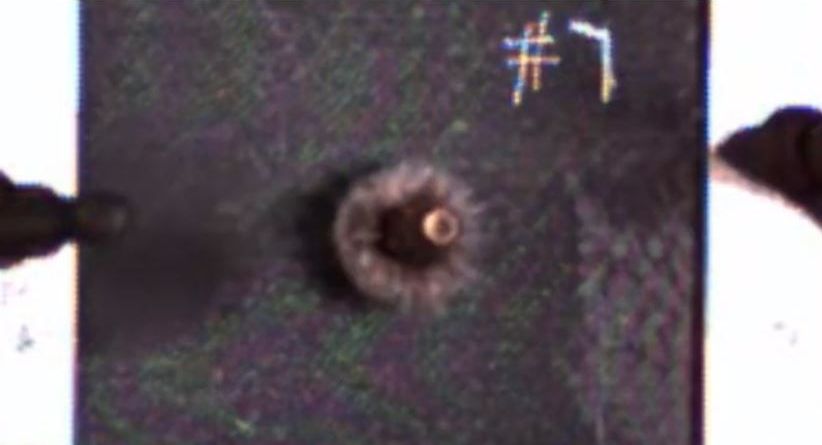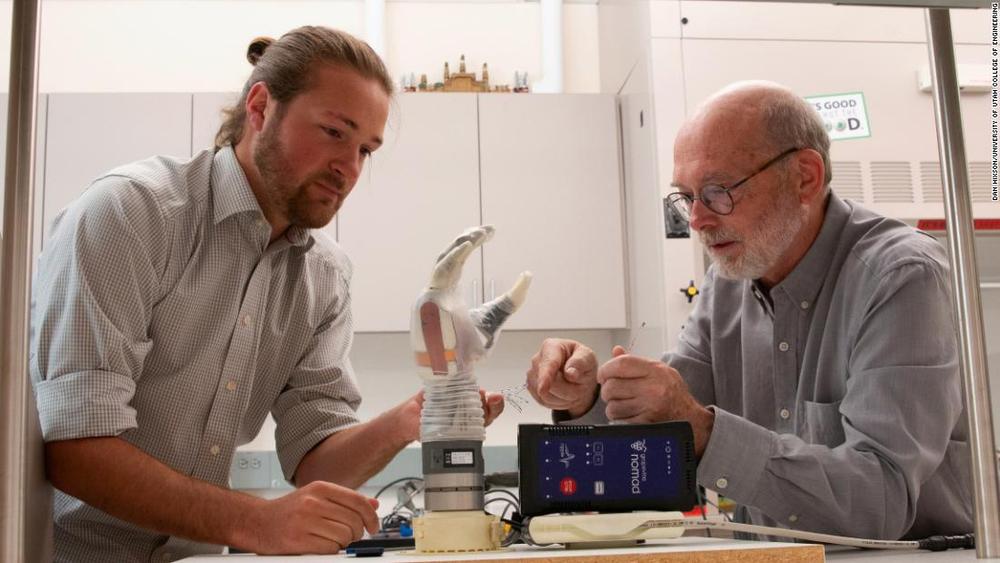A newly developed metallic foam can stop even the biggest of bullets, but as with steel, there’s still a margin for death.
Category: weapons – Page 4
Scientists have accidentally discovered a completely new form of matter that works in the same way as the lightsabers used in Star Wars.
A team of physicists were messing around with photons when they managed to get the particles to stick together and form a molecule.
The molecule behaves, they claim, just like a lightsaber by moving the light particles around in a solid mass and is unlike any matter seen before.
Department of Homeland Security (DHS) whistleblower Philip Haney was found dead in Amador County, Calif., on Friday, according to local authorities.
Haney, 66, “appeared to have suffered a single, self-inflicted gunshot wound,” the Amador County Sheriff’s Office said in a release. Sheriff and coroner Martin A. Ryan shared the initial details of the case.
“On February 21, 2020 at approximately 1012 hours, deputies and detectives responded to the area of Highway 124 and Highway 16 in Plymouth to the report of a male subject on the ground with a gunshot wound,” the release read.
According to ancient lore, Genghis Khan instructed his horsemen to wear silk vests underneath their armor to better protect themselves against an onslaught of arrows during battle. Since the time of Khan, body armor has significantly evolved—silk has given way to ultra-hard materials that act like impenetrable walls against most ammunition. However, even this armor can fail, particularly if it is hit by high-speed ammunition or other fast-moving objects.
Researchers at Texas A&M University have formulated a new recipe that can prevent weaknesses in modern-day armor. By adding a tiny amount of the element silicon to boron carbide, a material commonly used for making body armor, they discovered that bullet-resistant gear could be made substantially more resilient to high-speed impacts.
“For the past 12 years, researchers have been looking for ways to reduce the damage caused by the impact of high-speed bullets on armor made with boron carbide,” said Dr. Kelvin Xie, assistant professor in the Department of Materials Science and Engineering. “Our work finally addresses this unmet need and is a step forward in designing superior body armor that will safeguard against even more powerful firearms during combat.”
The news could someday mean the difference between death and life for people who suffer dramatic blood loss because of a stab or gunshot wound.
New Scientist.
The technique, officially called emergency preservation and resuscitation (EPR), is being carried out on people who arrive at the University of Maryland Medical Centre in Baltimore with an acute trauma – such as a gunshot or stab wound – and have had a cardiac arrest. Their heart will have stopped beating and they will have lost more than half their blood. There are only minutes to operate, with a less than 5 per cent chance that they would normally survive.
About 17 years ago, Keven Walgamott lost his left hand and part of his forearm in an electrical accident. Now, Walgamott can use his thoughts to tell the fingers of his bionic hand to pick up eggs and grapes. The prosthetic arm he tested also allowed Walgamott to feel the objects he grasped.
A biomedical engineering team at the University of Utah created the “LUKE Arm,” named in honor of the robotic hand Luke Skywalker obtains in “Star Wars: The Empire Strikes Back” after Darth Vader slices off his hand with a lightsaber.
A new study published Wednesday in the journal Science Robotics explained how the arm revived the sensation of touch for Walgamott. The University of Chicago and the Cleveland Clinic were also involved in the study.
If you’ve been a grunt, then you probably have a love-hate relationship with body armor. You love having it in a firefight — it can save your life by stopping or slowing bullets and fragments — but you hate how heavy it is — it’s often around 25 pounds for the armor and outer tactical vest (more if you add the plate inserts to stop up to 7.62 mm rounds).
It’s bulky — and you really can’t move as well in it. In fact, in one firefight, a medic removed his body armor to reach wounded allies, earning a Distinguished Service Cross.
Imagine if the body armor were just another part of your clothes, like a light jacket. Imagine not having to haul around those extra 30 pounds. Well, troops may not have to imagine much longer. According to a release from the Advanced Science Research Center at the City University of New York, body armor could soon have the thickness of just two atoms. This is due to how graphene acts under certain conditions.
Photons — those fundamental particles of light — have a slew of interesting properties, including the fact they don’t tend to crash into one another. That hasn’t stopped physicists from trying, though.
University of Chicago physicists have now come up with a new, highly flexible way to make photons behave more like the particles that make up matter. It might not give us lightsabers, but making photons collide could still lead to some fantastic technologies.
The trick to getting particles of light — which have no mass — to acknowledge one another’s existence is to have them meet in the quiet confines of an atom, and combine their properties with those of an electron.









